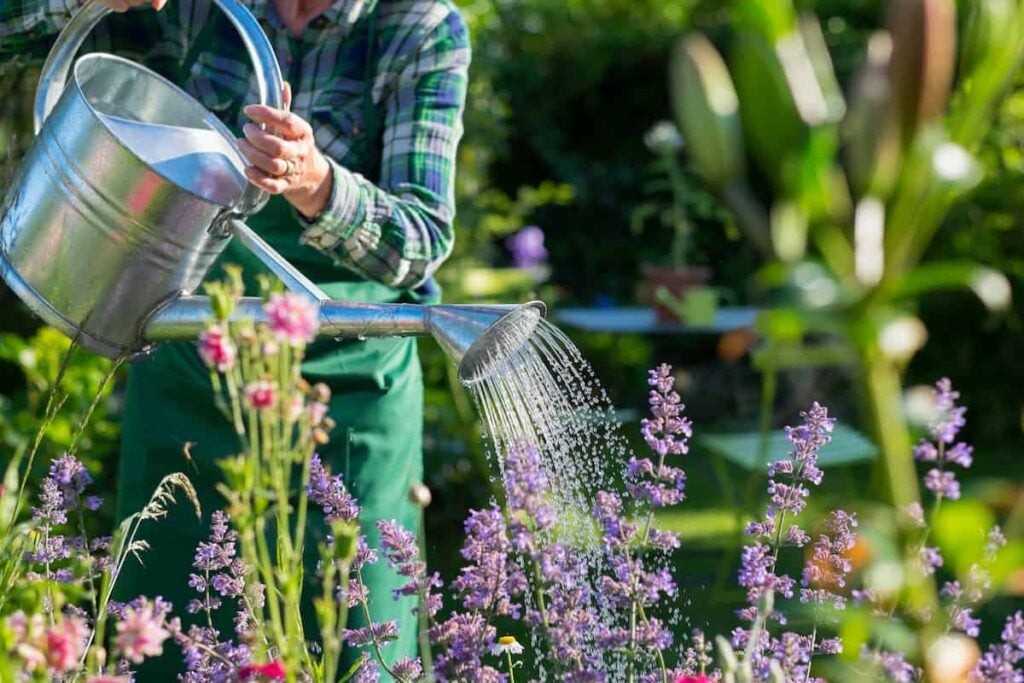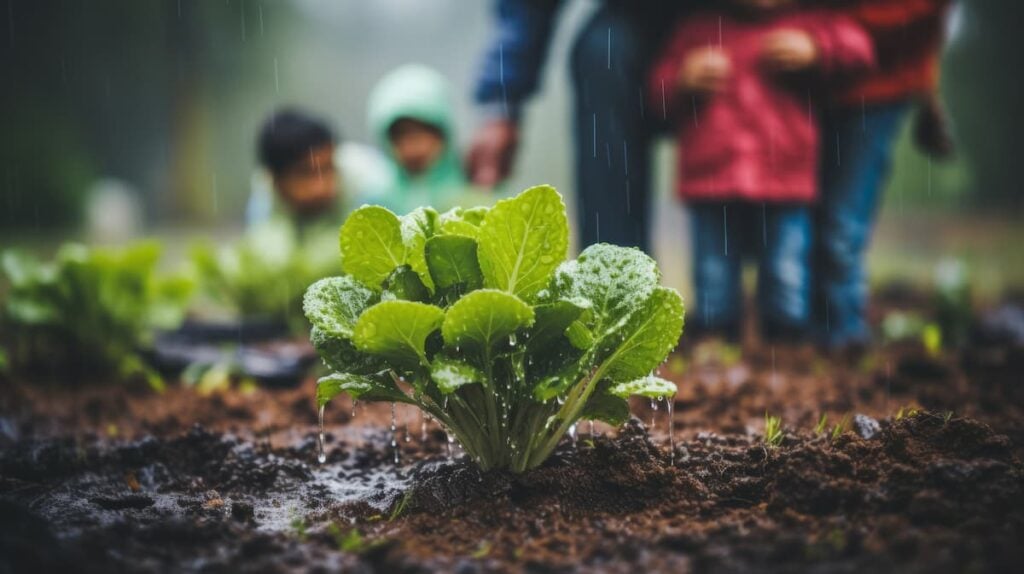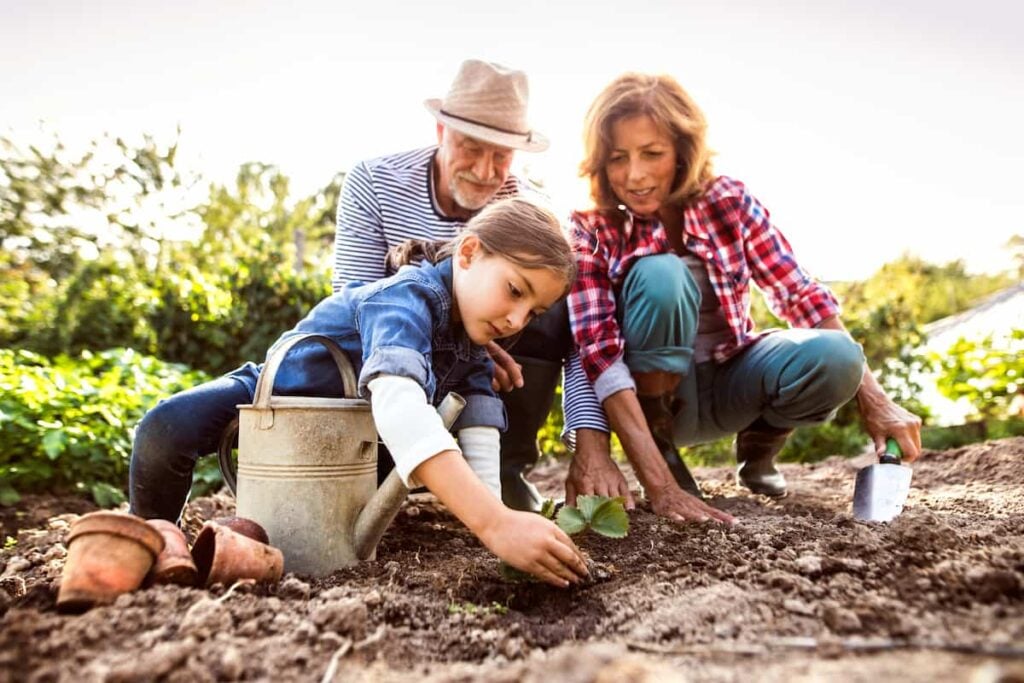Gardening in extreme climates comes with some challenges, but it can still be done! With the right approach, it’s possible to grow a successful garden no matter where you live.
Whether you’re dealing with hot, cold, wet, or dry conditions, this guide to extreme climate gardening has the tips you need.
With practical steps and helpful product recommendations, you’ll soon be on your way to growing a thriving garden.

General Strategies for Extreme Climate Gardening
1. Choose the Right Varieties
For the best chance of success, choose varieties that are well-suited to the climate where you live.
Believe it or not, that doesn’t have to completely limit what you can grow. For example, cauliflower generally does best in cooler climates, but certain varieties like Flame Star can handle warmer temperatures.
2. Plant at the Right Time
When gardening in an extreme climate, you want to set your plants up for success.
Some plants do best in cooler weather, while others need hot temperatures to thrive. Be strategic and plant your crops at the right time of year to get them off to the right start.
3. Use Containers
Planting in containers allows you to move the plants around based on the weather.
On scorching hot days, you can move the plants out of direct sunlight. On cold days, you can bring containers indoors.
4. Garden Indoors
You’d be surprised what you can grow from seed to harvest completely indoors.
And that’s just a start! Check out The Best Indoor Gardening Plants for even more ideas on what to grow when gardening in extreme climates.
Gardening in Hot Conditions
5. Use Shade Cloth
Shade cloth is a good way to protect plants from getting overheated.
Low-density shade cloth allows sunlight to filter in but keeps temperatures down so your plants don’t get too hot.
6. Water Frequently
Water evaporates more quickly during hot conditions so make sure plants are getting enough water. During extreme conditions, you may need to water as often as twice a day.
7. Water in the Morning or Evening
Water in the morning or evening to let plants soak in the most moisture possible.
Water evaporates more quickly in the middle of the day when the sun is strongest. Plus, watering in the middle of the day can shock plants, and you don’t want to do that!

Gardening in Cold Conditions
8. Start Seeds Indoors
Starting seeds indoors is one of the best options for extreme climate gardening. It prolongs the growing season so you can grow more food with less time out in the elements.
With just a few basic supplies, you can extend the growing season by as much as three months.
9. Build a Greenhouse
Using a greenhouse allows you to grow outdoors even when the weather is cold.
Greenhouses come in all price ranges, shapes, and styles, so you can find something that works for your space and budget.
10. Use Row Covers
Row covers provide temporary shelter for plants. They work like a greenhouse, trapping heat to keep plants warmer.
They’re ideal for protecting plants from frost or keeping plants warm during a cold spell. You can remove them when the weather heats up.
11. Grow in Raised Beds
The soil in a raised garden bed warms up quicker than in-ground soil.
Seeds germinate better in warm conditions so using a raised bed helps you to get planting sooner.

Gardening in Wet Conditions
12. Ensure the Soil is Well-Draining
Well-draining soil is a must for extreme climate gardening, especially if you get lots of rain.
Add sand or organic matter like composted wood chips to improve drainage in compacted soil.
Raised beds are a good solution for tricky drainage problems, especially in consistently damp areas.
13. Cover Plants with a Hoop House
A hoop house with a waterproof cover acts as an umbrella to keep your plants from getting too much water.
When the weather dries up, you can easily remove the cover while leaving the hoops in place for next time.
14. Keep Plants off the Soil
Diseases can splash up onto plants from the soil when it rains, and certain pests love wet conditions.
To prevent these types of problems, keep your plants up off the soil as much as possible.
Use a trellis or stakes to elevate plants and trim lower stems to keep them from touching the soil. Use mulch to create a barrier between the soil and your plants.
15. Add Slow-Release Fertilizer
Excessive rain can cause nutrients to leach out of the soil. Slow-release fertilizer helps add them back.
Most organic fertilizers are slow-release. Synthetic fertilizers are typically quick-release, but it’s possible to find slow-release varieties as well.

Gardening in Dry Conditions
16. Grow in the Ground
Soil in the ground holds water better than soil in raised beds or containers. For dry climates, that means you can water much less often.
17. Use Mulch
Mulch is a powerhouse when it comes to gardening in extreme climates.
It prevents evaporation, keeping the soil moist longer. It helps maintain a steady temperature for the soil, and it’s a good way to keep plants from touching the soil.
Natural mulches like straw or leaf mold add nutrients to the soil as they break down, feeding your plants and enriching the soil.
18. Keep the Garden Free of Weeds
Weeds compete with garden plants for water.
Keep them from getting that valuable hydration by pulling them up as soon as you see them.
19. Harvest Regularly
Harvesting regularly reduces the burden on plants, so they’ll need less water. Plus, it encourages plants to keep producing!

Wrapping up Extreme Climate Gardening
Extreme climate gardening isn’t always easy, but it’s incredibly rewarding. The fresh produce and beautiful flowers you can grow make it well worth the effort.For more gardening tips and tricks, head to the gardening page. You’ll find helpful guides, plant info, product recommendations, and much more to help with all of your gardening needs.
- About the Author
- Latest Posts
Sadie Teh has experience writing on a wide range of topics including gardening, outdoor life, crafts, travel, and more. She currently lives on 5 acres near Nashville, Tennessee, where she enjoys growing fruits, vegetables, and flowers (there’s always room for one more plant!)
Sadie’s writing is driven by a genuine desire to help people grow beautiful, thriving gardens while sharing the joy and satisfaction that gardening brings. With a bachelor’s degree in psychology and a master’s in education, Sadie’s background not only adds depth to her writing but also allows her to effectively communicate with a wide range of readers.
Sadie’s favorite things to grow are flowers (especially sunflowers) and tomatoes. When she’s not writing or working in the garden, you can find Sadie substitute teaching at her kids’ school, curled up with a good book, or poring over seed catalogs.
Sadie can be reached at stehwriting@gmail.com

